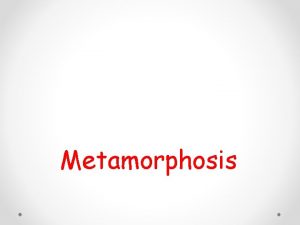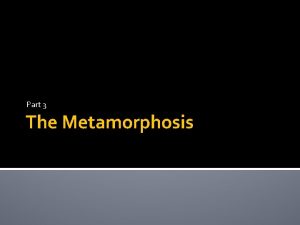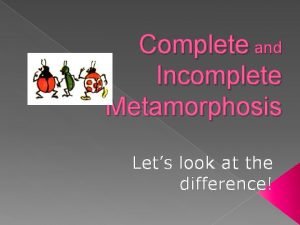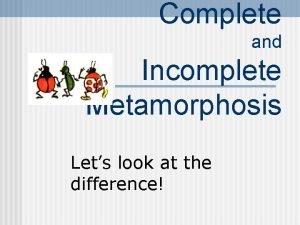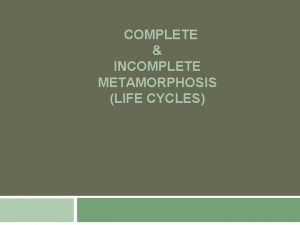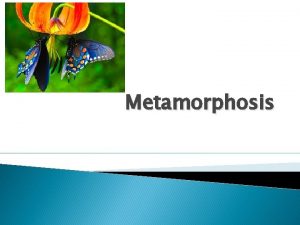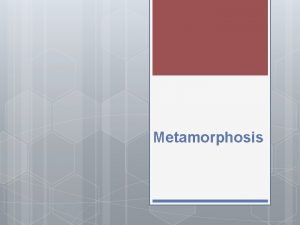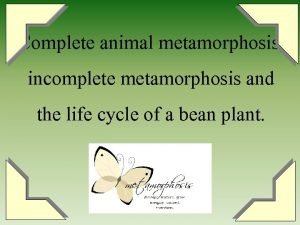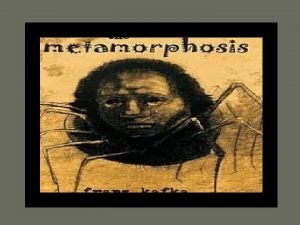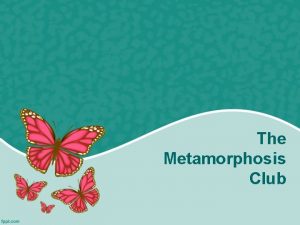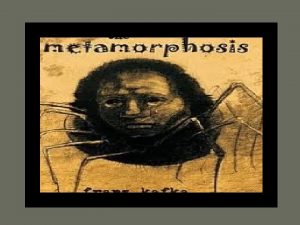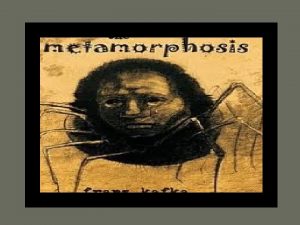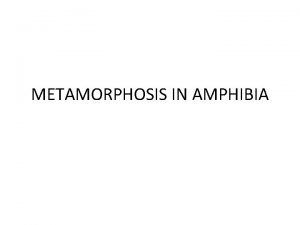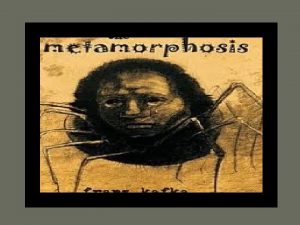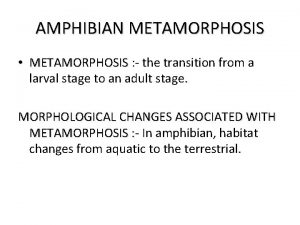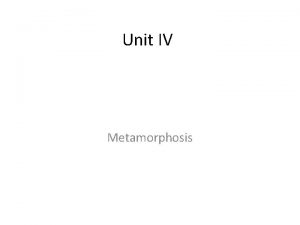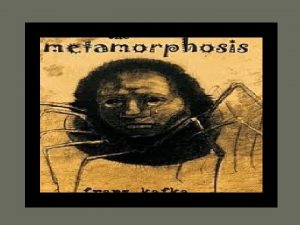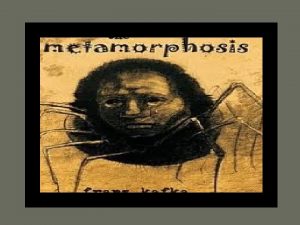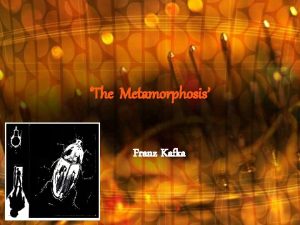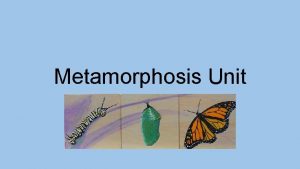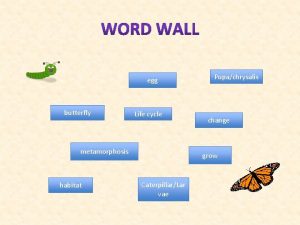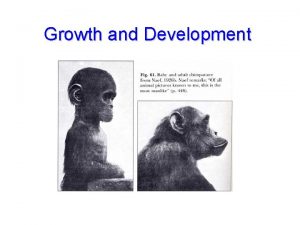METAMORPHOSIS It is the change in growth and































- Slides: 31


METAMORPHOSIS It is the change in growth and development of an insect undergoes during its life cycle from birth to maturity

There are four basic types of metamorphosis in insects. • No metamorphosis • Gradual metamorphosis (Paurometabola) • Incomplete metamorphosis ( hemimetaboa) • Complete metamorphosis

Ametabola (No metamorphosis) e. g. Silver fish

Life stages Egg young one adult

It is most primitive type of metamorphosis. The hatching insect resembles the adult in all respects except for the size.


Hemimetabola (Incomplete metamorphosis) e. g. Dragonfly, damselfly and mayfly

Life stages Egg naiad adult

The young ones are aquatic and are called naiads They are different from adults They breath by means of tracheal gills The lower lip is called mask, which is hinged and provided with hooks for capturing prey Their habit and habitat vary. After final moult, the insects have fully developed wings suited for aerial life



Paurometabola (Gradual metamorphosis) e. g. Cockroach

Life stages Egg nymph adult

The young ones are called nymphs They are terrestrial They resemble the adults in general body form Their compound eyes and mouth parts are similar to that of adults

Both nymphs and adults share the same habitat They lack wings and external genitalia Wing buds externally appear in later instars The genitalia development is gradual Later instar nymphs closely resemble the adult with successive moults




Holometabola (Complete metamorphosis) e. g. Butterfly and moth

larva pupa Egg adult

Majority of insects undergo complete metamorphosis Larva of butterfly is called caterpillar Larva differs greatly in form from adult. Compound eyes are absent in larva Lateral ocelli or stemmata are the visual organs.

Their mouth parts and food habit differ from adults Wing bud development is internal When the larval growth is completed, it is followed by a period of in activity (prepupa) and transforms into pupa In the pupal stage, the larval tissues disintegrate and adult organs are built up






Hypermetamorphosis Blister beetle

Triangulin Pupa Grub Life stages Egg adult

Common in hemi and holometabolous insects More than one larval stage is common
 Complete vs incomplete metamorphosis
Complete vs incomplete metamorphosis What is plant growth analysis
What is plant growth analysis Ground tissue
Ground tissue Primary growth and secondary growth in plants
Primary growth and secondary growth in plants Chapter 35 plant structure growth and development
Chapter 35 plant structure growth and development Carothers equation
Carothers equation Geometric growth vs exponential growth
Geometric growth vs exponential growth Neoclassical growth theory vs. endogenous growth theory
Neoclassical growth theory vs. endogenous growth theory Difference between organic and inorganic growth
Difference between organic and inorganic growth The metamorphosis symbols
The metamorphosis symbols Complete and incomplete metamorphosis
Complete and incomplete metamorphosis Incomplete metamorphosis frog
Incomplete metamorphosis frog Complete vs incomplete metamorphosis
Complete vs incomplete metamorphosis What is physical change and chemical change
What is physical change and chemical change Absolute change and relative change formula
Absolute change and relative change formula Whats the difference between a chemical and physical change
Whats the difference between a chemical and physical change Supply and demand curve shifts
Supply and demand curve shifts Examples of physical vs chemical changes
Examples of physical vs chemical changes Rocks change due to temperature and pressure change
Rocks change due to temperature and pressure change Physical change vs chemical change venn diagram
Physical change vs chemical change venn diagram Second order change
Second order change Hình ảnh bộ gõ cơ thể búng tay
Hình ảnh bộ gõ cơ thể búng tay Bổ thể
Bổ thể Tỉ lệ cơ thể trẻ em
Tỉ lệ cơ thể trẻ em Gấu đi như thế nào
Gấu đi như thế nào Chụp tư thế worms-breton
Chụp tư thế worms-breton Chúa yêu trần thế alleluia
Chúa yêu trần thế alleluia Môn thể thao bắt đầu bằng chữ đua
Môn thể thao bắt đầu bằng chữ đua Thế nào là hệ số cao nhất
Thế nào là hệ số cao nhất Các châu lục và đại dương trên thế giới
Các châu lục và đại dương trên thế giới Công của trọng lực
Công của trọng lực
